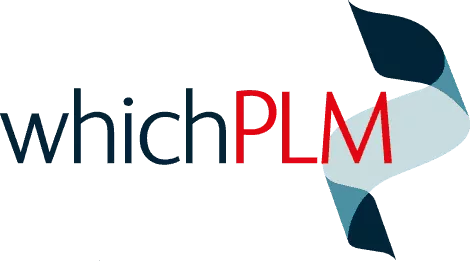
In his latest digital exploration, WhichPLM’s own Mark Harrop shares his thoughts on blockchain, the IoT, PLM, and the consumer as each relates to the modern supply chain.
Since PLM entered the retail, footwear and apparel (RFA) industry around the turn of the millennium, I have to admit that I’m disappointed at the lack of progress the industry has made towards supply chain collaboration and transparency.
I was part of the team that designed the precursor to Product Lifecycle Management (PLM) – which we called Collaborative Product Management or CPM – in the late 90s, and we envisioned it as a complete design and development platform that would allow brands and retailers to share key product data with their extended supply chains. Bear in mind that back then the Internet was still fairly primitive, and only really commercialised in the Western part of the world. It took a while for other regions to become connected, which remained a barrier to supply chain connectivity for some time.
Still, today, almost 18 years later, it’s frustrating to see that a significant percentage of PLM customers do not make use of their solutions’ ability to power end-to-end collaboration, and instead revert to emailing PDF technical specifications back and forth. This is exactly what they did in the days of CPM with one major difference: there is no longer any excuse.
Most of the world now enjoys good internet connectivity – in many cases better than we have in Europe and the USA. And the technology certainly isn’t to blame; modern PLM solutions support extensive, fully-secure, role-based access for supply chain partners, and are designed around the sharing of technical information, sample orders, and so on, all with full revision history.
So why is fashion so far behind the curve compared to other industries when it comes to engaging with the extended supply chain and partner ecosystem? I believe it’s a matter of mindset. PLM vendors and customers are used to doing things the old-fashioned way, and rarely consider the alternative. And while some brands and retailers use supplier portals as a stop-gap solution – an inadequate one in my opinion – most are simply satisfied with using email to share technical specifications because working this way has yet to cause them any problems.
But this will not remain the case for long.
Current supply chain best practices in other industries are, frankly, leagues ahead of what we see in fashion, footwear and accessories today. Food and beverage companies, for instance, can confidently tell us where in the world a single raw ingredient came from, who it was grown and picked by, its expiration date, and a host of other information. And while I’m not suggesting that clothing and footwear should be subject to as many regulations as the things we eat and drink, the parallels are becoming clearer as consumers in every industry begin to demand greater transparency, and want to be able to see the full lifecycles of the products they’re buying.

Working the old-fashioned way, sharing emails or Excel files, or uploading PDFs to vendor portals that are disconnected from the main PLM backbone, removes any chance of achieving this transparency on the scale the future is going to demand. In a typical supply chain, 20% of suppliers make around 80% of products, and yet the brands and retailers that commission those products can obtain little or no insight into how, where, or by whom they were made – even when they have otherwise strong relationships with those key suppliers.
As I mentioned, though, this lack of visibility is very quickly becoming a big problem for fashion businesses around the world – and I want to draw particular attention to what’s happening in my home country, the UK, where a lack of transparency is already undermining businesses’ ability to comply with the law.
The Modern Slavery Act has recently come into effect here, mandating that businesses with a turnover more than £36 (or $50 million US approximately, for our international readers) should produce an annual audit statement, openly declaring that slavery, by the broad modern definition, is not present anywhere in their supply chains.
That revenue threshold effectively covers all but the smallest companies, so right at this moment, retailers, brands and manufactures across the country are scrambling to pull together supplier statements and establish concrete codes of practice to allow them to say, with some degree of confidence, that they are in compliance with the Act, by it part or in full. But while these business’s intentions are good, is their confidence well founded, or are their supply chain practices – sharing PDFs and spreadsheets – now beginning to work against them?
Let’s examine what it takes to properly declare compliance with the Modern Slavery Act. Each retailer or brand who passes the revenue threshold must request code of practice statements from all of their suppliers (Tier 1, 2 & 3), stating that they promise not to use unpaid labour. They must take pains to obtain and archive testing certificates from raw material suppliers on the other side of the world. They must track, as far as they can, prototypes, samples, product orders and contracts throughout their products’ lifecycles – when they are loaded onto the trucks, boats and arrive at distribution centres or direct to the stores.
If we take a step back, though, and look at how most companies are working today, we can see that each of those pieces of evidence is only as trustworthy as the people signing their names to a hardcopy document, or on a PDF or email. And where the majority of brands and retailers lack the right level of insight into how their Tier 1 suppliers work, what hope do they have of going further – drilling down into extended supply chain partners’ business practices at the mill or dye house level.
We need to start looking at new ways to overcome these challenges: firstly by using PLM as a platform to enable collaboration with all tiers of the supply chain; secondly by looking at how emerging technologies can support the longer-term goal of total transparency.

Consider the Internet of Things (or IoT) which allows us to collect huge volumes of data from connected machinery, so we can see how spreaders, cutters, sewing machines, and other hardware is being used in a factory on the other side of the world. Other industries are also making headway with blockchain technologies, using smart contracts and distributed ledgers to track and trace products through every stage of their lifecycles, however minor. Everything from finished goods to materials bundles to buttons can conceivably be tagged with QR codes, or affixed with NFC or RFID tags (small, washable, embedded chips) that allow us to follow their every move from manufacturing to distribution – and even as far as end of life recycling. And unlike traditional status updates, which are made manually and after the fact, IoT and blockchain approaches communicate in real-time by design, leaving nothing open to misinterpretation, and replacing the element of human-to-human trust with total machine-to-machine transparency.
So far in this article I’ve focused mainly on the up-stream side of the supply-chain, which in my strong opinion is where a great deal if value will come over the next few years ahead, but it’s important to remember that the same technologies can have equally transformative impacts downstream, where transparency (or a lack thereof) will influence consumer confidence.
Today a consumer can pick up an item of food, scan its unique QR code, and see exactly where in the world and by whom it was made, and, via a totally transparent blockchain, how it made the journey from the producer to the point of sale. In principle, this is no different to how an eco-conscious shopper might choose one shirt or blouse over another because it bears a statement saying that the materials used are of the finest quality, sustainably produced and manufactured in a trust worthy supply-chain, but in practice, there is a world of difference. While the blockchain is 100% transparent to the consumer, a formal “transparency audit” made by the brand or retailer on its supply-chain processes is not. In effect, the consumer must trust the brand or retailer’s label as evidence that they operate on a fair labour basis, because the inner workings of their audit processes are closed. Which is to say they believe in these statements without proof of the “facts” – something the new generation of shoppers and regulators will prove less willing to do.
While I’m certainly not suggesting that the retailers or brands behind ethical and environmental standards in any industry are lax in their duties, the reality is that it is almost impossible today – working the traditional way – to know where your materials are really coming from, or which factory is making your products. And while codes of practice are nice, we cannot overlook the fact that some manufactures have a chequered history of being creative with the truth about working hours and pay, or subcontracting work beyond their capacity. It is not uncommon, even for the world’s largest retailers and brands, to find that a few of their products are being produced by factories they’ve never even heard of, since their Tier 1 supplier took on work they couldn’t really handle and passed it on to another producer who has similarly never seen the code of practice.

So, when we aggregate evidence provided by these suppliers on trust, and collect it in a single, centralised system – preferably PLM – we are, in effect, creating a chain where each individual link runs on faith. And while the Modern Slavery Act is UK-only, similar (or much more prescriptive, punitive alternatives) are already being implemented in other production and consumption markets around the world. And at a global level, fashion is, right now, making bold claims about product safety, product provenance, fair labour and sourcing practices, based on digital information we cannot guarantee we can trust.
Are we, as an industry, satisfied to settle in this way? More importantly, in a market where consumers increasingly buy with a conscience, how long will the court of public opinion accept plausible deniability when the tools for far greater transparency already exist? “When you’re talking about sharing and communicating intelligence, you need to be able to rely on a single source of information for all those taking apart in the design and manufacturing process: retailers, brands, mills, trims & component, packaging, manufactures, suppliers and consumers,” says Emanuele Bertoli, Chief Marketing Officer at 1Trueid, an Italian technology company focused on discovering applications for emerging blockchain technologies in the fashion industry. “In a data-driven world, we often get so preoccupied with using and analysing information that we overlook our need to actually verify it.”
I’ve referred to blockchain already, but it’s a word you might already be familiar with in your personal life – if not necessarily how it’s being used to create a new kind of transparency. If not, the odds are better that you’ve heard of the digital currency that led to its creation, BitCoin. And since I believe blockchain technology rests at the centre of the future of our supply chains, I want to talk to a little more about its history.
A near-constant fixture in finance and investment headlines, BitCoin was the first of the so-called “cryptocurrencies,” digital tokens that can be spent, stored, speculated upon, imbued with value, and traded the same way as traditional paper-backed money, but without the oversight of a single, central authority. The vision for BitCoin came first: a democratic digital currency, free from the control of governments, where every individual is responsible for their own wallet, and value and applications are dictated by the open, global market.
The technology to deliver on this promise came about out of necessity; there is no single BitCoin bank, so the original blockchain was created to serve as a replacement, delivering a decentralised, constantly-reconciled, publically accessible ledger of transactions that is incorruptible and effectively un-hackable. The encrypted ‘blocks’ of data represent the immutable entries on that ledger. The thing to realise is that a blockchain, unalterable, unimpeachable, and accessible to anyone, is simply a step beyond what has previously been possible in the area of transparency, in any industry, or using any other method, however popular or advanced. With no hint of subjectivity or arbitration, a product (material or finished garment) whose lifecycle lives on a blockchain either is or is not from where it says it’s from; it either is or is not made or sourced the way it claims to be. And, sooner rather than later, the tools could be in customers’ hands to allow them to say with certainty one way or the other.
Of course, the idea of substantiating what is behind a label takes a different aspect in the apparel, footwear and accessories industries. While a food producer might take a chance, and stake a claim to an accreditation they have not quite earned, fashion has a much more pressing problem when it comes to consumers’ trusting the labels they see. “The vision for blockchain in fashion is that for any product passing through our channels, we can know, without doubt, who its owner is, and that the product itself is authentic,” explains Bertoli. “To put that into context, the international trade in counterfeit goods is currently worth around $460 billion, which is $100 billion more than drug trafficking.
So, using blockchain to secure the authenticity of products, solves two problems: we save the RFA sector huge amounts of money that’s currently lost to fake products, and we realise a new and unique connection between brand and consumer that was not possible until now.”

While the immediate value of better securing intellectual property with blockchain is clear, we can also consider what the same technology might mean in a market where personalisation and mass customisation are more common. Where today’s RFA blockchain entries might be thousands of instances of the same t-shirt, tomorrows might be comprised entirely of one-offs, with consumers able to buy a garment that is not just physically but also digitally distinct from any other.
But while the potential applications of blockchain technologies in fashion are exciting and far-ranging, how imminent are they? It’s important to remember the short timescales we are working with; BitCoin first saw widespread use in 2011, and just six years later the planet’s biggest technology businesses, financial gateways, infrastructure providers and others are all moving beyond the proof of concept stage and beginning to deploy blockchains in their essential business operations. Today, a single designer can create his or her styles in an affordable, subscription-based PLM solution, have their fabrics digitally printed around the corner, and then sell the resulting products on platforms like Open Bazaar, which accept all major cryptocurrencies and have few, if any, real barriers to entry. Products conceived digitally, manufactured digitally, with integrity of information at every step.
For fashion to make any further leaps, however, new fundamentals must be in place. From decentralised data storage and open systems, to improved data governance and mass roll-outs to supply chain users. And even more importantly, brands and retailers must embrace the idea that sharing information with their supply chain partners is the only possible way they can take part in this future. In a time of blockchains, IoT, and total transparency, a PDF tech pack just won’t cut it; PLM will need to be the enabler of blockchain. Those brands and retailers who’ve realised this, and started to swim against the tide and communicate in real-time, already have a significant edge on their nearest competitors, and their lead will only become more pronounced over time if the industry as a whole does not re-evaluate its attitude to supply chain connectivity and collaboration.

*This piece can also be found in WTiN’s IoTex Issue 4.




